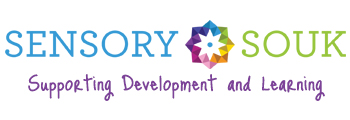What to look out for with autism--signs & symptoms
This is a list of signs to help you identify if your child has autism. We hope it sheds insight on what you may be experiencing with your loved one.
Source: AutismSpeaks.org | Learn the signs of autism
The following information is not meant to diagnose or treat and should not take the place of personal consultation, as appropriate, with a qualified healthcare professional and/or behavioral therapist.
If you are an adult and think you may have autism, please see
Is It Autism and If So, What Next? A Guide for Adults.
The timing and severity of autism’s first symptoms can vary widely. Some children with autism show hints of future problems within the first few months of life. In others, symptoms may not become obvious until 24 months or later. Some children with autism appear to develop normally until around 18 to 24 months of age and then stop gaining new skills and/or start losing skills.
The following "red flags" suggest a child is at risk for autism. Some children without autism have some of these symptoms. That’s why further evaluation is crucial. If your child exhibits any of the following, please see Step 2: Get your child screened.
Possible signs of autism in babies and toddlers:
- By 6 months, no social smiles or other warm, joyful expressions directed at people
- By 6 months, limited or no eye contact
- By 9 months, no sharing of vocal sounds, smiles or other nonverbal communication
- By 12 months, no babbling
- By 12 months, no use of gestures to communicate (e.g. pointing, reaching, waving etc.)
- By 12 months, no response to name when called
- By 16 months, no words
- By 24 months, no meaningful, two-word phrases
- Any loss of any previously acquired speech, babbling or social skills
Possible signs of autism at any age:
- Avoids eye contact and prefers to be alone
- Struggles with understanding other people’s feelings
- Remains nonverbal or has delayed language development
- Repeats words or phrases over and over (echolalia)
- Gets upset by minor changes in routine or surroundings
- Has highly restricted interests
- Performs repetitive behaviors such as flapping, rocking or spinning
- Has unusual and often intense reactions to sounds, smells, tastes, textures, lights and/or colors
If you have concerns after reviewing this page, please contact your healthcare provider.
Also see: The Autism Speaks First Concern to Action Tool Kit
Next:
Step 2: Get your child screened
Step 3: Access services
- Tags: autism
- Raana Smith






